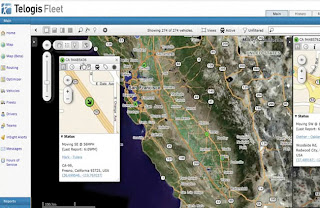 Improving the world’s resiliency to severe weather and natural disasters depends on how well we integrate our built environment with our natural one, according to the findings of a report presented today on the economic, human and structural impact of natural catastrophic events over the past year.
Improving the world’s resiliency to severe weather and natural disasters depends on how well we integrate our built environment with our natural one, according to the findings of a report presented today on the economic, human and structural impact of natural catastrophic events over the past year.Craig W. Tillman, President of WeatherPredict Consulting Inc., presented the report, “Impact 2011: Examining a Year of Catastrophes through the Lens of Resiliency,” at the 2011 Annual Meeting of the Federal Alliance for Safe Homes (FLASH) being held Oct. 26-28 at Disney’s Boardwalk Inn, Lake Buena Vista, FL.
“It’s often said that natural disasters are man-made – our fragilities are directly related to how well or unwell our built environment performs in critical times,” Tillman said. “This report provides a platform for recognizing common themes and, ultimately, a framework to understand how resilience can work to improve communities worldwide.”
 In his presentation, Tillman provided his company’s expert view of recent earthquake and weather catastrophes; talked about how these events shape the approach society uses to manage catastrophic risk; and discussed how risk management approaches are evolving. He also described the opportunities available for collaboration with the science and engineering community.
In his presentation, Tillman provided his company’s expert view of recent earthquake and weather catastrophes; talked about how these events shape the approach society uses to manage catastrophic risk; and discussed how risk management approaches are evolving. He also described the opportunities available for collaboration with the science and engineering community.“In the context of historical natural catastrophes, 2011 continues to be a particularly challenging year, with significantly high human loss and property destruction,” Tillman said. “The most devastating of these catastrophes include the earthquakes that struck Japan and New Zealand causing a tragic number of deaths and outsized financial losses.”
He said the earthquakes in Tôhoku, Japan, and Christchurch, New Zealand, showed that even in the developed world there are varying levels of resilience for our most at-risk communities. And he reminded attendees that “mitigation pays,” saying that an investment in stronger building codes is a small cost compared to the lives and property that could potentially be spared.
For a copy of the report, visit http://www.flash.org/download.php?id=216.WeatherPredict is a U.S. affiliate of RenaissanceRe, a leading global property catastrophe reinsurance company. One of WeatherPredict’s primary roles is bringing intelligence to the risk managers dealing with natural catastrophes.
With the theme Disaster Safety: One Movement, Many Voices, the 2011 FLASH Annual Meeting convened more than 100 of the nation’s leading experts in disaster safety, property loss mitigation and weather outcomes.
In a variety of presentations, panel discussions and demonstrations, meeting attendees are hearing and seeing the latest in innovative disaster safety and mitigation products, programs and impacts natural and manmade disasters have had on the U.S. economy and population at large. Prominent speakers include academics, builders, educators, emergency managers, engineers, researchers and scientists.
About FLASH













































